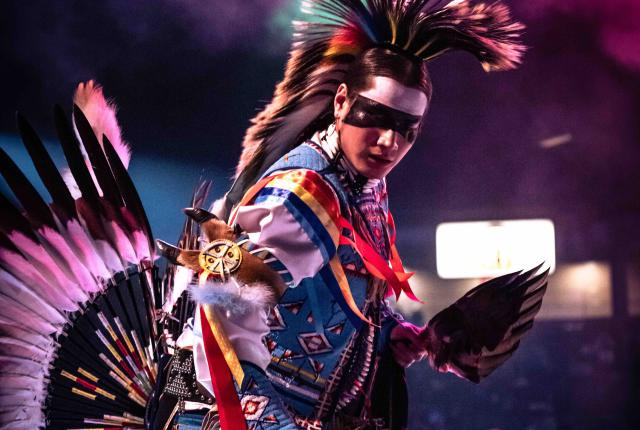THE FIRST THING YOU FEEL is the ground tremble with the rhythmic thumping of the drums. It is the symbolic heartbeat of the earth, echoing the hearts beating in our own chests. The drums are at the center of a powwow, and this is one of the biggest in the United States. After two years of isolation, the Gathering of Nations returned to Albuquerque last year, with a burst of pent-up energy. There was healing to be done.
The word “powwow” likely derives from a Narragansett term pau wau, meaning “spiritual leader” or “medicine man.” In time, it came to represent gatherings of Indigenous people throughout North America to celebrate a hunt, prepare for battle, or give gratitude. A powwow is a chance to renew relationships, make new friends, and strengthen community bonds.
Powerful voices rise up, appearing to come from everywhere. The songs—or prayers—seem to move back and forth between human and spirit worlds, honoring cultures that have survived against the most brutal of odds, a ringing out of pride, and the sharing of a legacy of strength and respect. The dancers move in healing, syncopated steps, their bodies channeling a memory, the movements showcasing skills that have been passed from generation to generation. All ages are represented, the swirling colors of their motions knitting together communities into something far greater than the sum of their parts.
This is a celebration of the resilience of Native people. This is what belonging and representation look like. Before, now, and into the future.
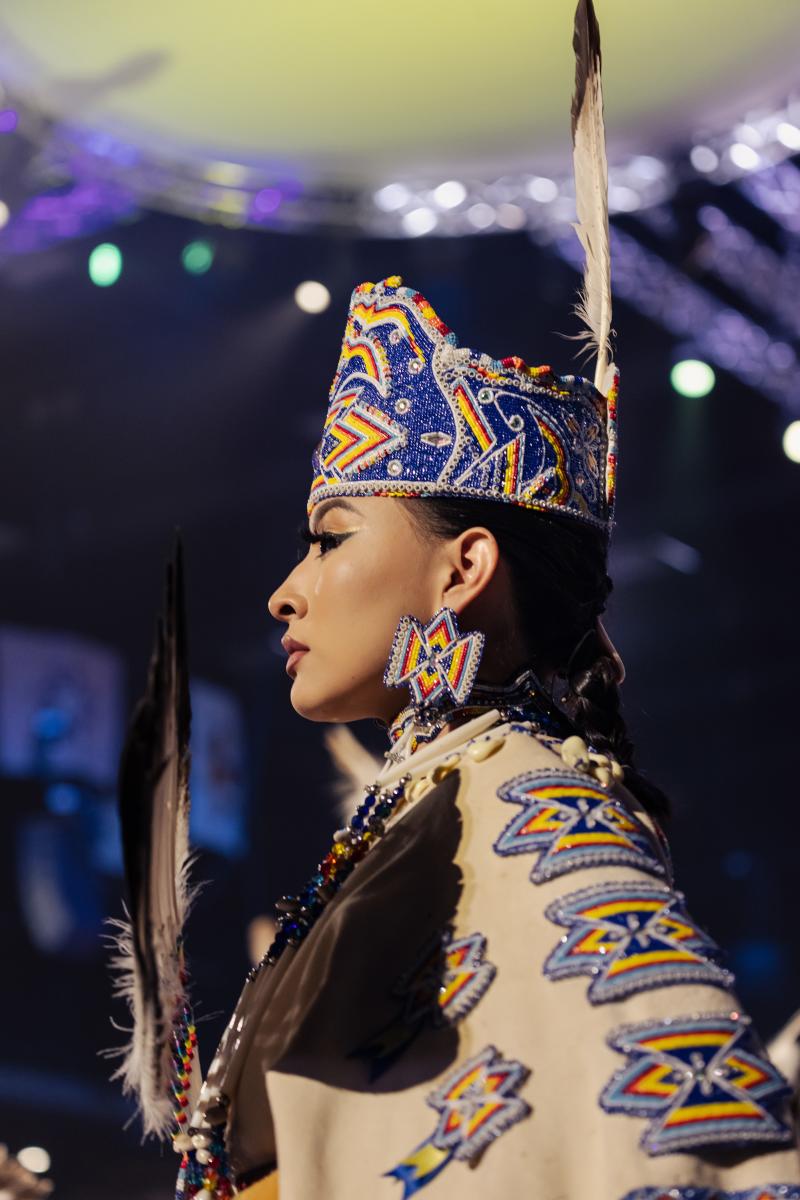
A young participant during the powwow’s Grand Entry wears an ornately beaded crown and a single eagle feather to signify purity.

In all the swirls of color, drumming, and singing, it’s easy to focus solely on the sensory experience of it all. But none of it would happen without the individual efforts of people who regard the protection and celebration of culture as a moral command. I saw the commitment on this gentleman’s face and felt I could hear the voices of those who came before him.
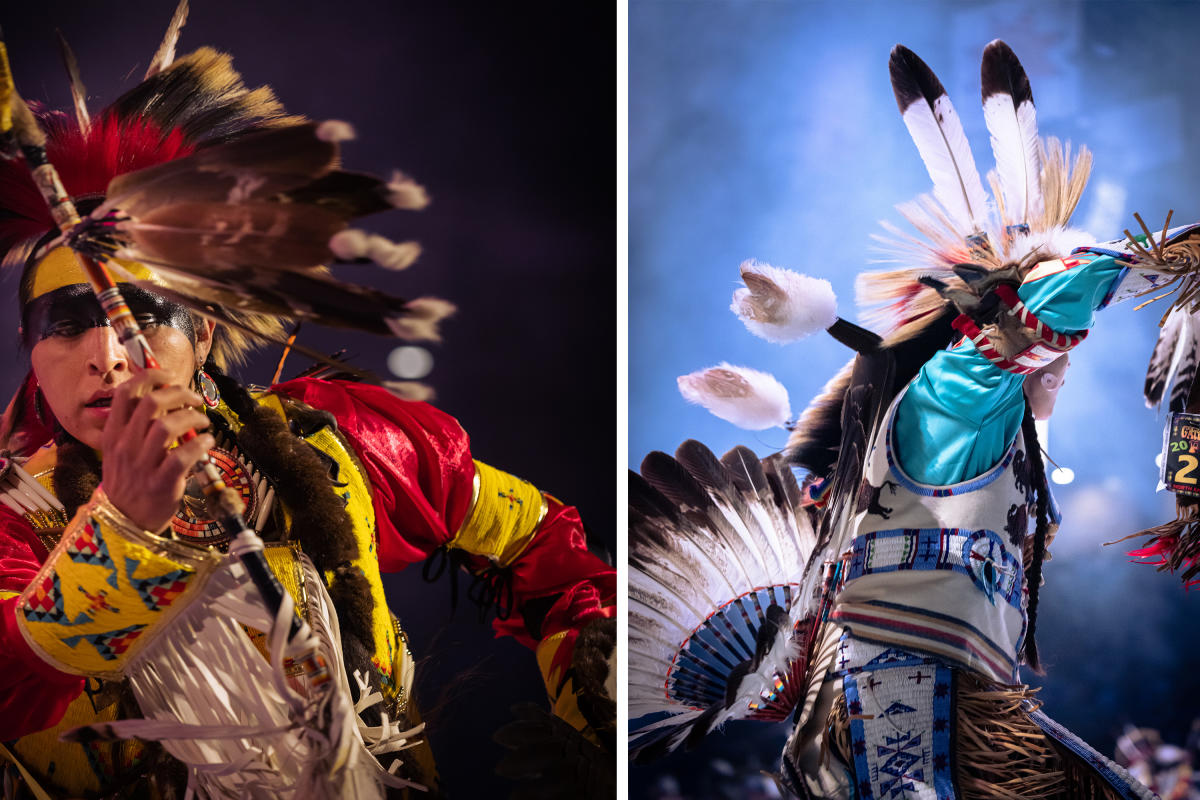
Athletic Fancy Dance competitors wear elaborate regalia. Gus McDonald, of Oklahoma’s Ponca Hethuska Society, invented the dance in the 1920s, based on a War Dance.
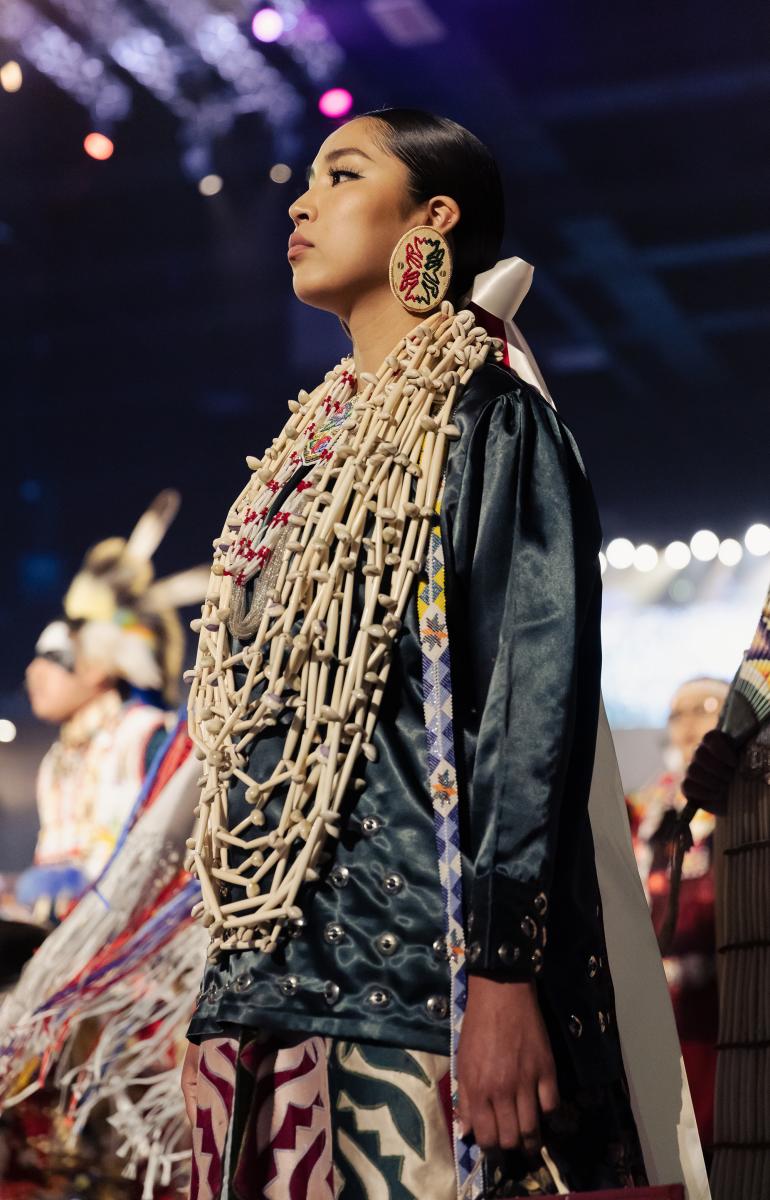
A participant prepares to enter the arena.
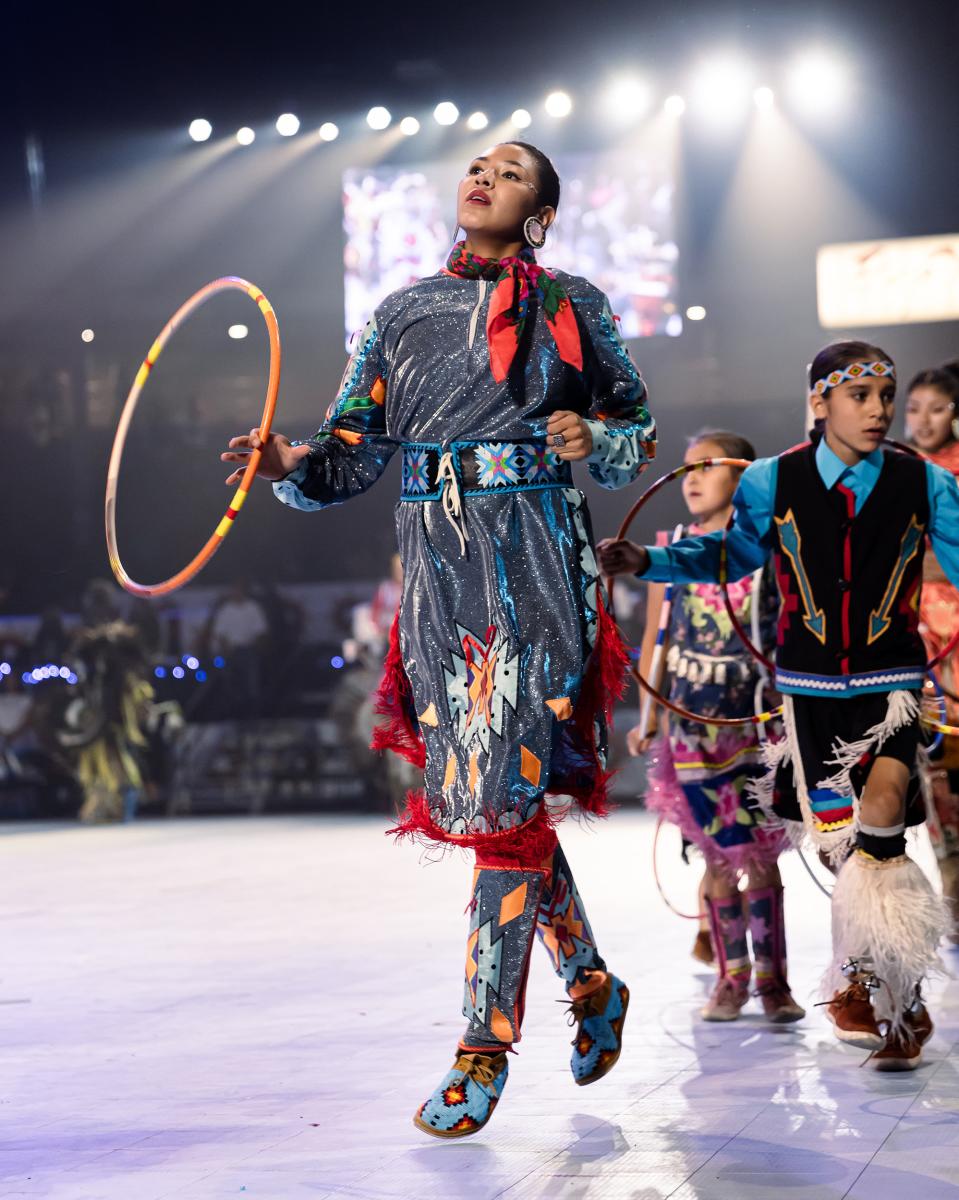
ShanDien Sonwai LaRance (Hopi/Tewa/Diné/Assiniboine) leads Lightning Boy Foundation students.
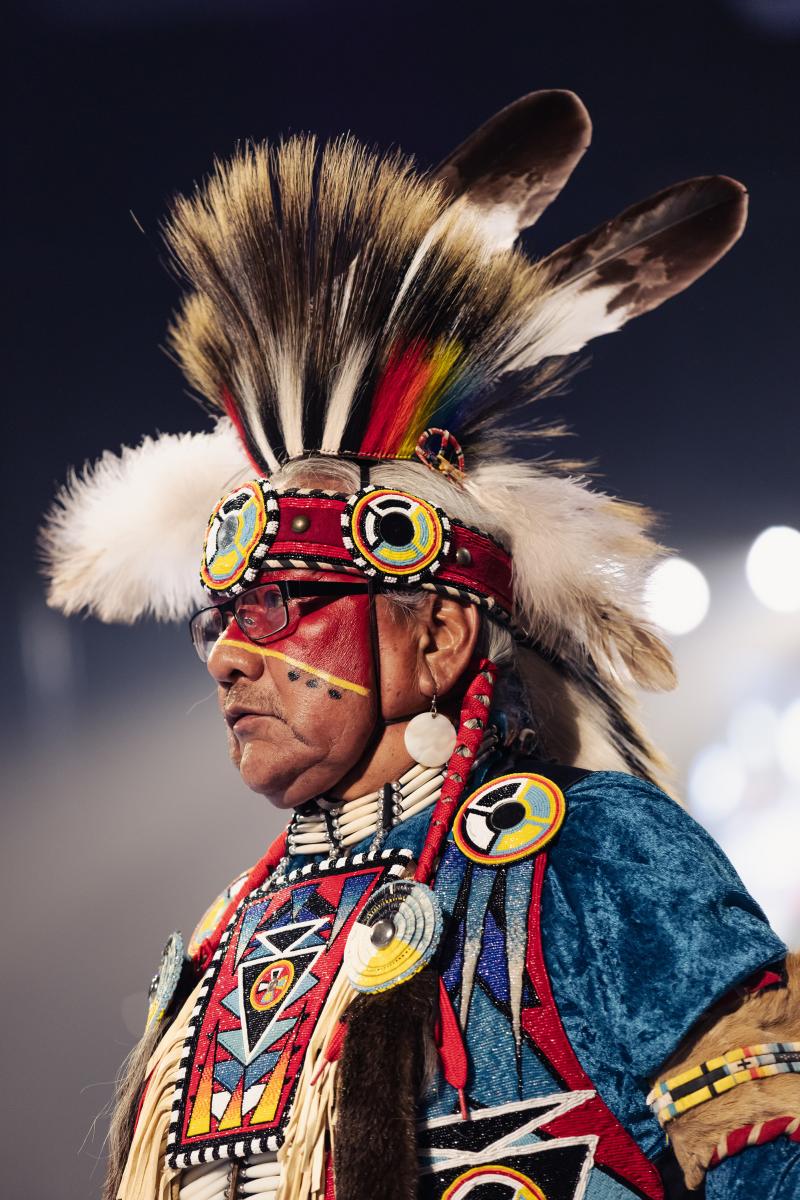
Elders are the keepers of tribal knowledge and have important wisdom, traditions, and history that can be shared at such a large gathering.
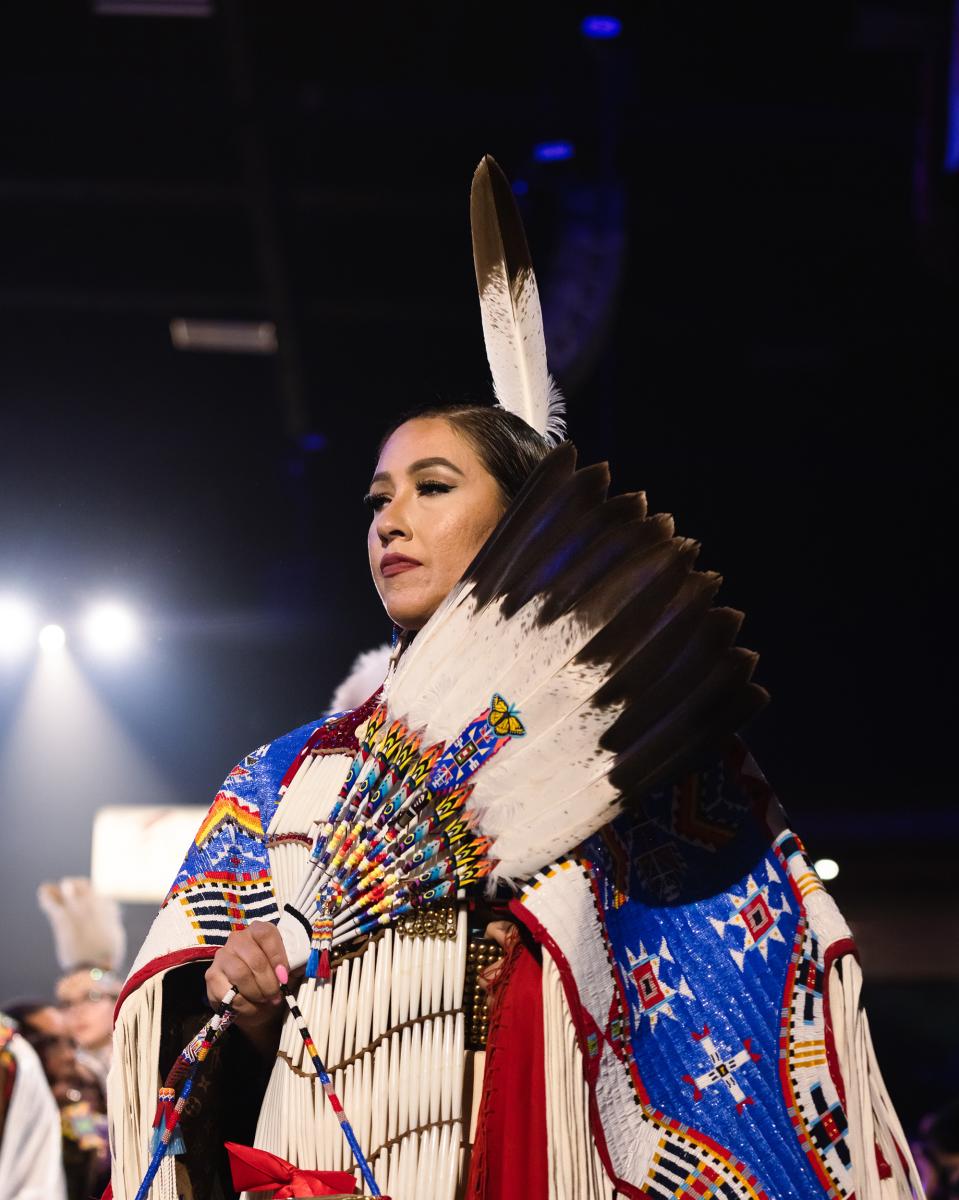
Randi Bird (Sioux) performs in the Women’s Traditional Dance, where the feet never leave the ground, signifying a connection to the earth. The slow steps keep the long fringes swaying gently. Dancers raise an eagle-feather fan at significant moments of the song.
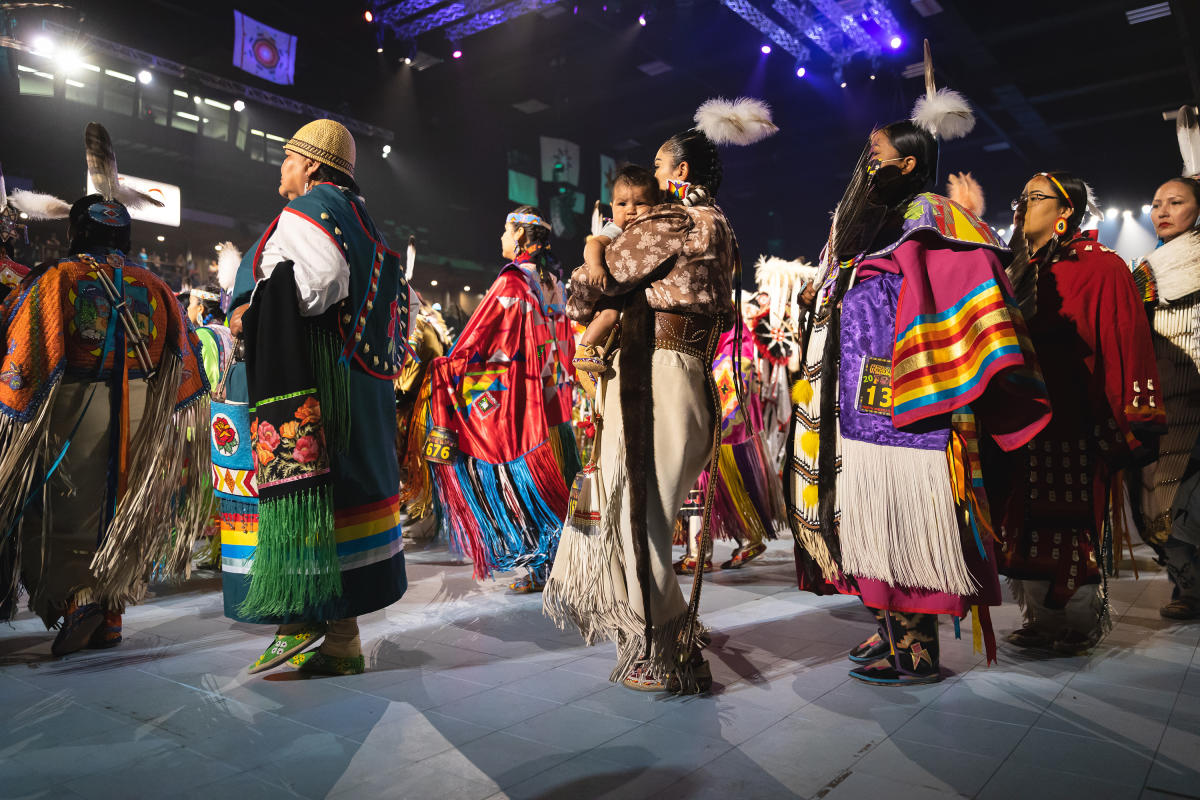

During the Grand Entry, the arena floor at Expo New Mexico becomes packed with participants. But if you look closely, you just might see someone introducing the youngest person in their family to this tradition.
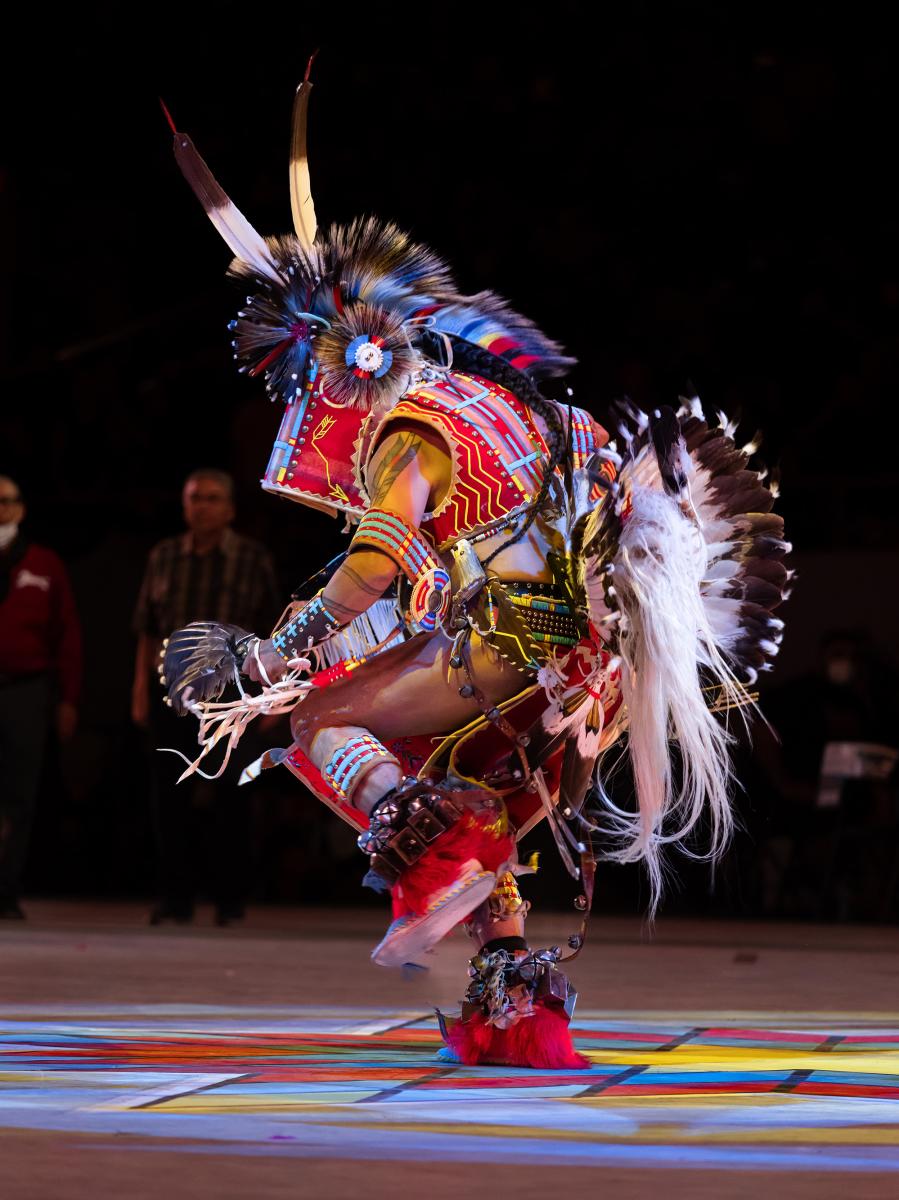
“The Horse Tail Dance was introduced to me by a great friend of mine, Lee Sorrelhorse, in the early 2000s,” says Levi Blackwolf (Warm Springs/Yakama). “After his passing, his wife gave me his horse tail. I grew up riding horses and our family was blessed to have an Appaloosa we named Spots. My love for this dance comes from these two wonderful lives.”
POWWOW NOW
Get set for this year’s Gathering of Nations.
The Gathering of Nations Pow Wow happens April 27–29 in Albuquerque, with most events at Expo New Mexico. Learn about special events, the Indian Traders Market, ticket prices, and more at gatheringofnations.com.


